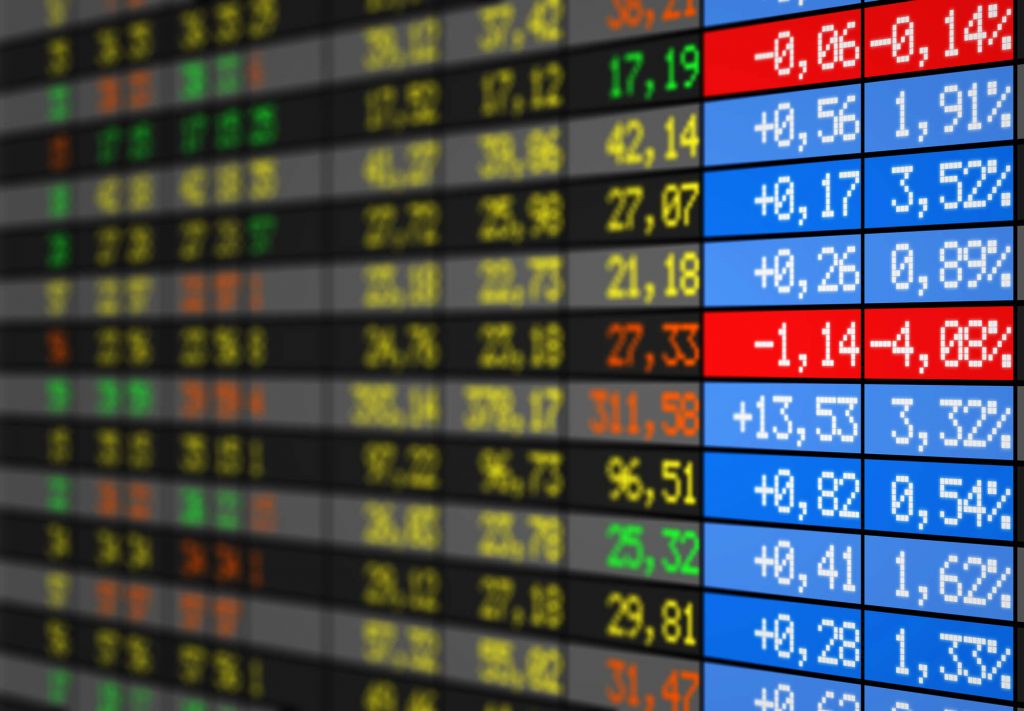
Almost anyone with an online brokerage account, an open afternoon schedule, and steady nerves can trade options after the stock market closes.
It’s a different beast than the standard stock market. And it carries no small amount of risk. But investors looking for alternate opportunities to improve their fortunes have found that after-hours options trading can be a useful tool.
Can you trade options after hours? Let’s have a look at what it means.

What is After-Hours Options Trading?
Stock exchanges are open during typical business hours. In the U.S., that window happens from 9:30 am to 4:00 pm every weekday, except for some holidays. For years, that was the only time that investors could transact on the stock exchange.
The rise of electronic trading changed that. Global exchanges gave traders more avenues for transactions while the New York exchanges were closed. American exchanges faced real competition for investors for the first time.
The New York Stock Exchange (NYSE) first allowed after-hours trading in 1991. They let institutional investors (mutual funds, hedge funds, banks, etc.) complete trades between 4:00 pm and 5:15 pm.
Retail investors soon clamored for after-hours trading options for themselves. Both Nasdaq and the NYSE started to allow individual investors to trade for longer hours. Now, retail investors have more flexibility in the times at which they can trade. After-hours options trading is one of their — well, options!
On both the NYSE and Nasdaq exchange, after-hours options trading takes place between 4:00 pm and 6:00 pm EST. It’s fueled by electronic communications networks (ECNs). All transactions are completed over the Internet.
Using after-hours trading, an investor can enter an order to buy or sell options into their computer. The order will include the number of shares that the investor wants to trade and the price they want to trade at. The computer then “searches” for standing offers that match the order.
If the computer finds a matching offer, the trade is executed. If it doesn’t find one during the active session, the trade is canceled.
Order Types
Traders use certain order mechanisms. These set the conditions and the times at which they wish to execute (or stop) a transaction.
After-hours options traders use a subset of these order types. They’re especially pertinent to all extended-hours traders.
Limit Orders
In a limit order, the trader sets the price at which they want to buy a certain security before a given time. When the share price hits or dips below that point, the order is executed. If it doesn’t do so by the deadline, the order is cancelled.
After-hours traders always use limit orders, rather than market orders — which are immediate purchases, regardless of price. Because after-hours traders would risk substantial losses, market orders aren’t allowed. With limit orders, they can control their cash balance.
Good for Day and Good ‘til Canceled
Good for Day (GFD) orders expire when the current trading session ends. This includes both after-hours and regular-hours trading. Good ‘til Canceled (GTC) orders are active until they’re fulfilled or until the buyer cancels them. GTC orders remain active through multiple sessions.
Stop-Loss Orders and Trailing Stop Orders
Stop-loss orders are similar to limit orders, in that the trader sets a price at which to execute a transaction. With stop orders, it’s the price at which the trader wants to sell a stock. These orders are intended to limit a trader’s losses from a commodity that’s trending down. If the stock price reaches the defined low point, the stop order will turn into a market order.
A trailing stop order doesn’t wait for the stock price to hit a certain low. Rather, it executes after the share has returned a profit and the seller wants to exit the position before it falls further.
All stop orders occur during regular exchange hours. If an after-hours trader places a stop order, it will go into effect when the market opens on the following business day.
Orders That Are Not Allowed in After-Hours Option Trading
In after-hours trading, order types that demand immediate execution are generally declined. These include “fill-or-kill” and “immediate-or-cancel” orders. They also include “all-or-none” orders, in which stock must be sold in full or not at all.
Can Anybody Do It?
Yes, anyone can do it! After-hours options trading was once restricted to institutional investors who were making transactions on behalf of a company or fund. But as electronic trading grew, so did the number of retail investors who wanted access to after-hours trading. Now, the after-hours market is open to anyone.
You must have an online account with a brokerage that allows after-hours trading. Some brokerages don’t. Others allow it for a limited time each day. But some brokerages offer after-hours trading with no restrictions.
Keep in mind that institutional investors still have a big presence in after-hours trading. They’re professionals, they’re experienced, they’re competitive, and they usually drive the market. That presents an elevated risk to the average retail investor. But if you’re confident that you can take them on, nobody can really stop you.

The Benefits
For people who want in on after-hours options trading, there are a few unique advantages.
Access to Foreign Markets
One big allure of extended-hours trading is the opportunity to interact with foreign exchanges. Most of these markets are in different time zones. After-hours traders can monitor what’s going on in these exchanges. Foreign trading activity often influences what happens in American markets.
Response to After-Hours News Events
Similarly, important events that happen after the market closes can have a significant impact when the market opens the next day. Foreign news, political struggles, natural disasters, and other events may not happen between 9:30 am and 4:00 pm. After-hours traders can react to these events and position their portfolios to avoid volatility.
Response to Earning Reports
Most corporations release their quarterly earnings reports after the market closes. They do it so that their newsworthy announcements won’t immediately alter the stock price. But after-hours traders can get a jump on options once earnings are announced. They can buy a security before its price increases the next morning or they can sell one before it falls too low.
Setting Their Schedule
Some traders can’t make day trades because of work, school, or other daytime responsibilities. After-hours options trading gives them the chance to trade when they have time to do so.
The Chance for Better Pricing Opportunities
The after-hours market is vulnerable to volatility. While that means that there’s a bigger risk, there’s also a chance for some great deals at attractive prices. With enough experience in after-hours options trading, you might be able to find a few.
The Risks
After-hours options trading entails some significant risks. If you decide to take it on, be aware of a few potential drawbacks and disadvantages.
Low Liquidity
Understandably, there isn’t as much trading volume after hours as there is during the day. When there’s less trading activity, there’s less liquidity.
Liquidity refers to how easy it is to trade a stock without affecting its share price too much. During the day, there are so many transactions that options prices are less likely to fluctuate too wildly. But after hours, the scene flips. There’s likely to be a greater difference between the highest price that buyers will offer and the lowest price sellers will accept. This can result in unexpected additional trading costs.
Limit Orders Only
After-hours options traders can only place limit orders. They don’t execute until the price hits a certain point. If it doesn’t, the order is canceled. When you place an after-hours order, there’s always the chance that it won’t go through.
This could be interpreted as an advantage. Limit orders control investors’ losses. Many traders only place limit orders, whether they trade during the day or after hours. Just know that an after-hours limit order may not execute, which could be inconvenient.
Competition Against Professionals
After-hours options trading sessions are still dominated by highly trained, experienced investors. Some of them use after-hours trading as an extension of their business day. You’ll find a lot of institutional investors and wealthy individuals in after-hours trading. You can be confident that they know what they’re doing. Be mindful of that.
More Volatility and Uncertainty
Low liquidity, as we said above, creates price volatility. This potential hazard is more present in after-hours options trading than it is during the day. Another drawback is that after-hours traders see restricted pricing information. Daytime prices are set by consolidating the rates of several trading venues. When these venues close up shop for the day, after-hours traders see a limited result that’s derived from fewer sources. It may not reflect the price that will be in place the next day.
Should You Do It?
After-hours trading offers a few unique advantages and a lot of risks. Furthermore, the after-hours market sees more stock transactions than options. But it’s still possible to find some rare option opportunities in the extended market.
So can you trade options after hours? Weigh your decision carefully. If you’re still willing to take the plunge, see what avenues your online brokerage offers for after-hours options trading.

Gorilla Trades: Expert Stock Picks for All Investor Types
Whether you’re an after-hours trader or you prefer the day shift, Gorilla Trades can bolster your portfolio and boost your earnings with their proven stock-picking formula. Find out more by starting a free trial.
